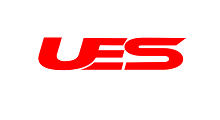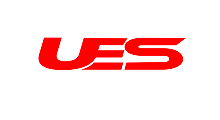Quality Assurance (QA) and Quality Control (QC) are integral components of any project or manufacturing process aimed at ensuring that the final product or deliverable meets predetermined quality standards. QA/QC Inspection & Documentation plays a crucial role in maintaining quality, reliability, and consistency throughout various industries. This comprehensive guide delves into the importance of QA/QC, the inspection process, and the role of meticulous documentation in ensuring product or project quality.
Understanding QA/QC Inspection & Documentation:
Quality Assurance (QA) and Quality Control (QC) are often used interchangeably, but they have distinct purposes within the quality management framework:
- Quality Assurance (QA): QA focuses on the processes used to create a product or deliver a service. It involves creating and implementing systems and procedures to ensure that the product or service meets specified quality requirements.
- Quality Control (QC): QC, on the other hand, is the set of activities and techniques used to monitor and evaluate the quality of a product or service. It focuses on identifying defects or deviations from established quality standards.
Inspection and documentation are key elements in the QC phase of quality management. Inspection involves a systematic examination of the product or process, while documentation ensures that the inspection process is recorded, tracked, and reported effectively.
The Importance of QA/QC Inspection & Documentation:
- Ensuring Quality: QA/QC inspection and documentation are essential for verifying that the product or process conforms to established quality standards. This ensures that customers receive products or services that meet their expectations.
- Defect Prevention: Through thorough inspection, defects and non-conformities can be identified and addressed early in the production or project cycle, preventing costly rework and delays.
- Compliance: Many industries are subject to regulatory requirements and standards. Effective QA/QC inspection and documentation demonstrate compliance with these standards and regulations.
- Continuous Improvement: Detailed documentation of inspection results allows organizations to track trends and make data-driven decisions to improve processes, products, and services over time.
QA/QC Inspection Process:
The QA/QC inspection process typically follows these steps:
- Planning: Before inspection begins, a plan is created that outlines the scope, objectives, and standards against which the product or process will be evaluated.
- Preparation: Inspectors gather the necessary tools, equipment, and checklists to perform the inspection.
- Execution: During the inspection, inspectors assess the product or process to identify defects, non-conformities, and deviations from established standards.
- Reporting: Inspection results are documented, including any defects or issues found, and are reported to relevant stakeholders.
- Analysis: Data collected during the inspection is analyzed to identify trends or patterns and make informed decisions.
- Corrective Actions: If defects or non-conformities are found, corrective actions are initiated to address and rectify the issues.
The Role of Documentation:
Meticulous documentation is crucial in the QA/QC process for several reasons:
- Record Keeping: Documentation provides a historical record of inspections and their outcomes, which is essential for traceability and accountability.
- Data Analysis: Collected data can be analyzed over time to identify trends, areas for improvement, and potential root causes of recurring issues.
- Legal Compliance: In some industries, comprehensive documentation is necessary to demonstrate compliance with regulatory requirements.
- Communication: Documentation serves as a means of communicating inspection results to stakeholders, including management, customers, and regulatory bodies.
- Transparency: Transparent documentation helps build trust with stakeholders and clients, as they can track the quality of products or services provided.
Challenges in QA/QC Inspection & Documentation:
- Resource Constraints: Limited resources, including qualified inspectors and equipment, can pose challenges to conducting thorough inspections.
- Complexity: In industries with intricate processes or products, ensuring accurate and comprehensive documentation can be challenging.
- Change Management: Adapting to new standards or regulations and ensuring that documentation reflects these changes can be demanding.
Conclusion:
QA/QC Inspection & Documentation are indispensable in upholding quality and consistency in various industries, from manufacturing to construction and service provision. Through a well-structured inspection process and meticulous documentation, organizations can ensure their products and processes meet specified quality standards, satisfy regulatory requirements, and continuously improve. The ability to adapt to changing circumstances and challenges is vital in maintaining a commitment to quality and delivering products or services that meet or exceed customer expectations.
 Pусский
Pусский 





